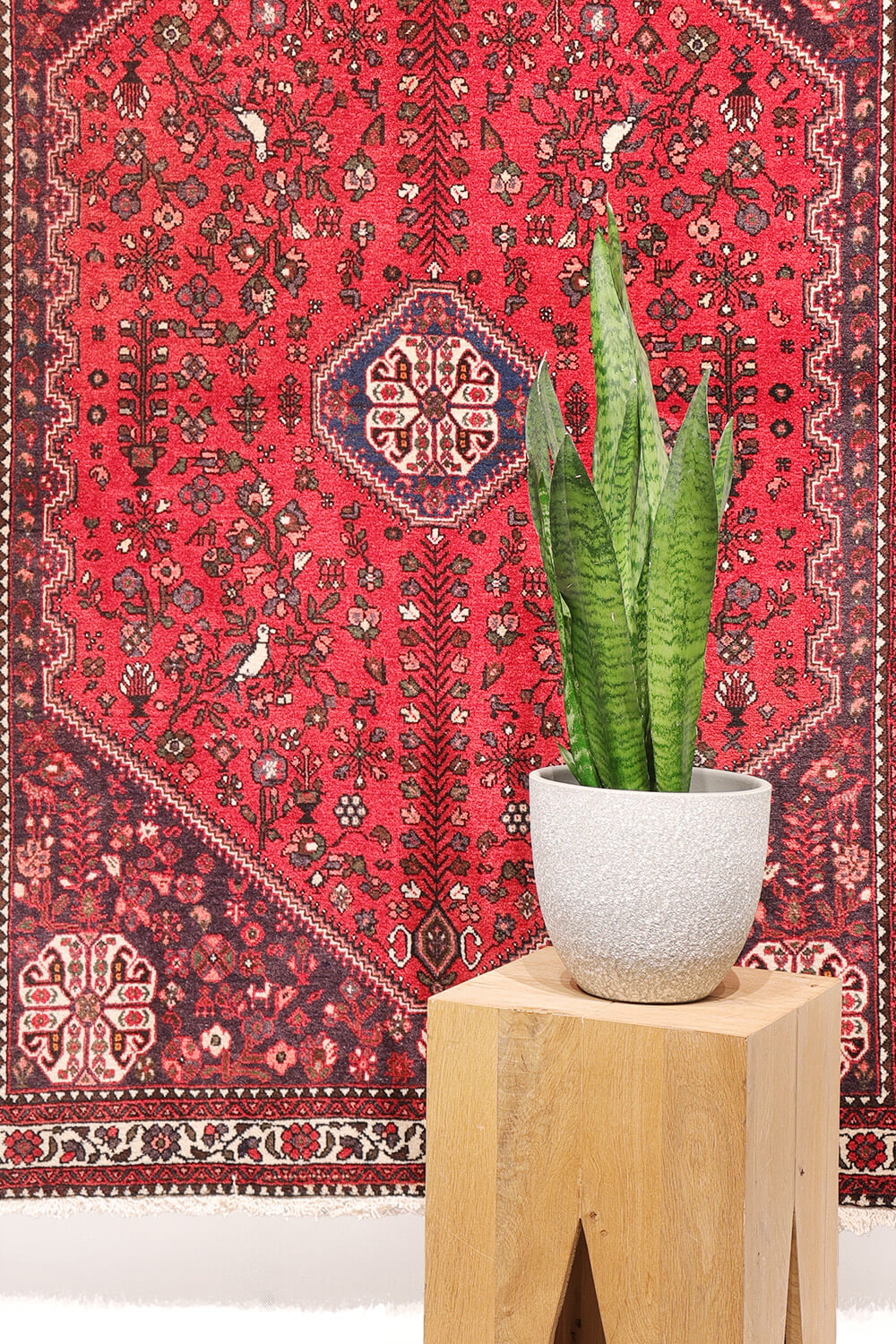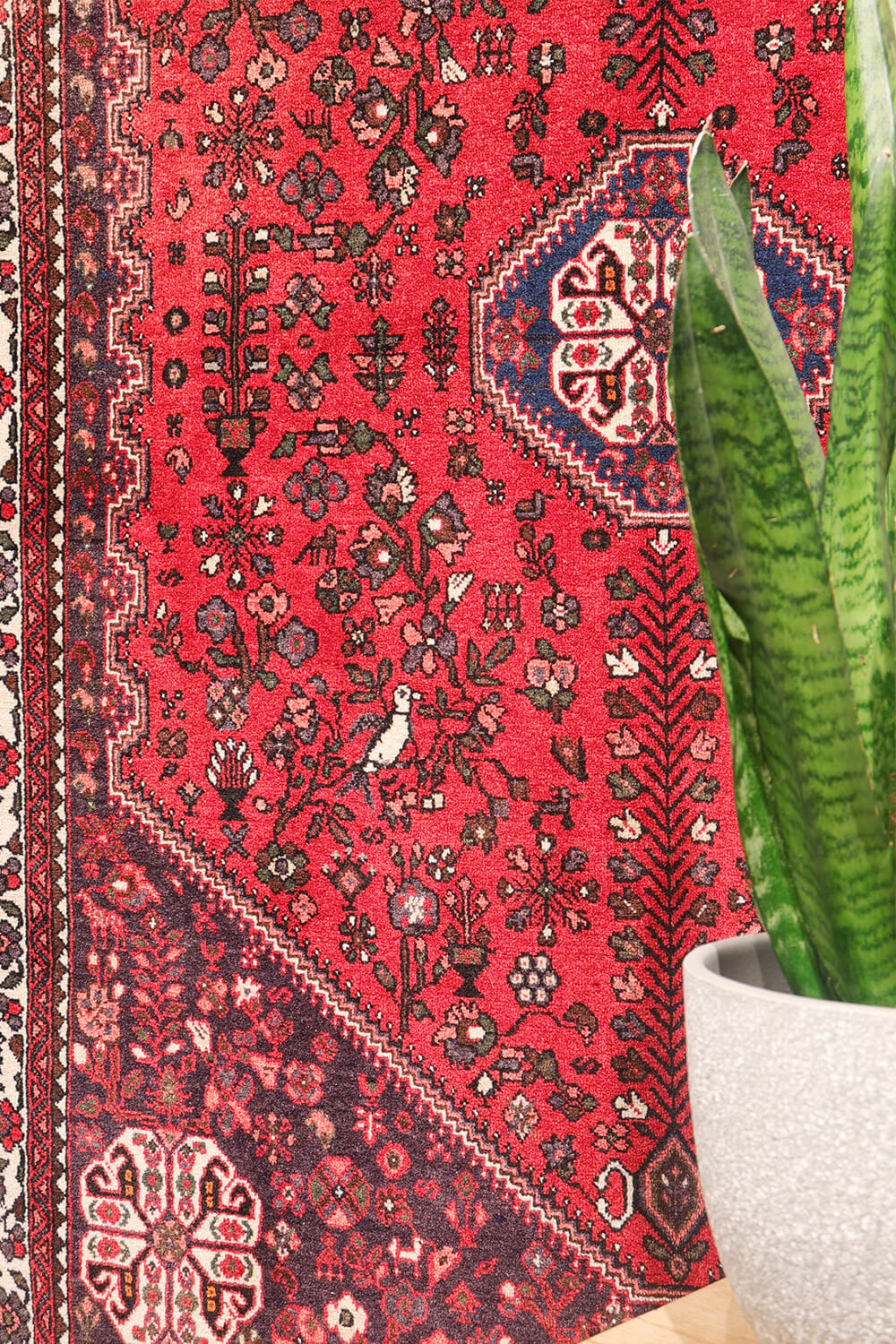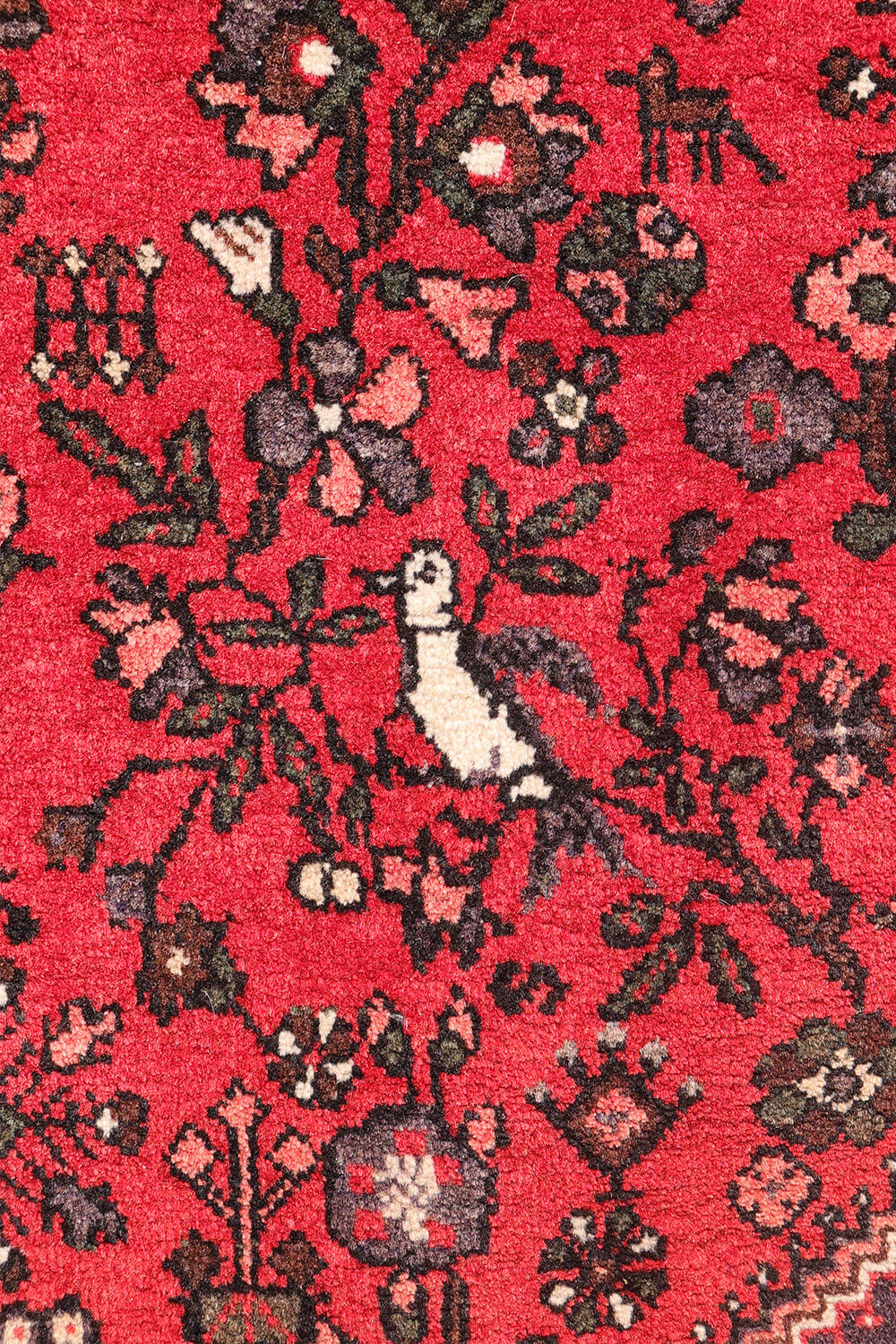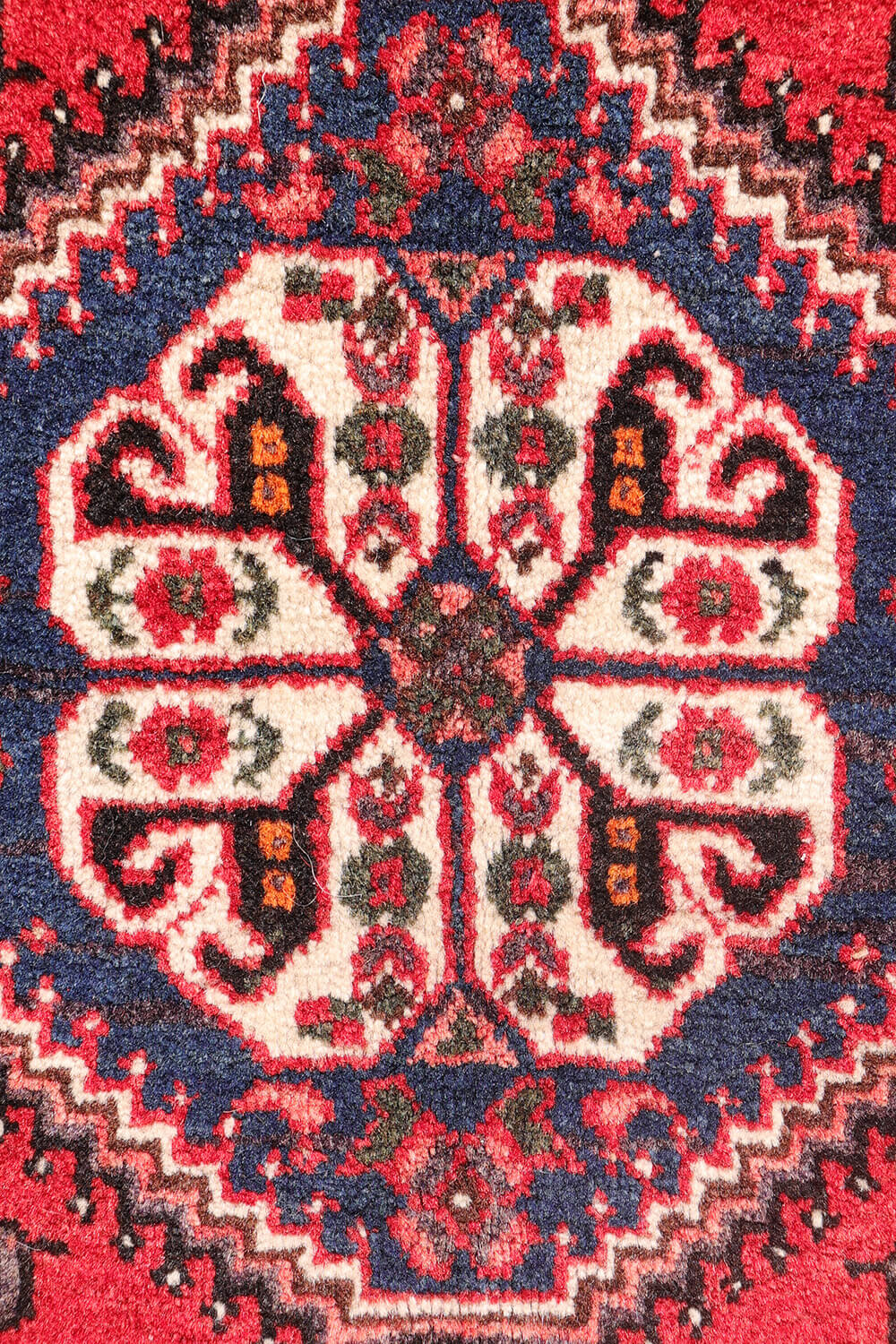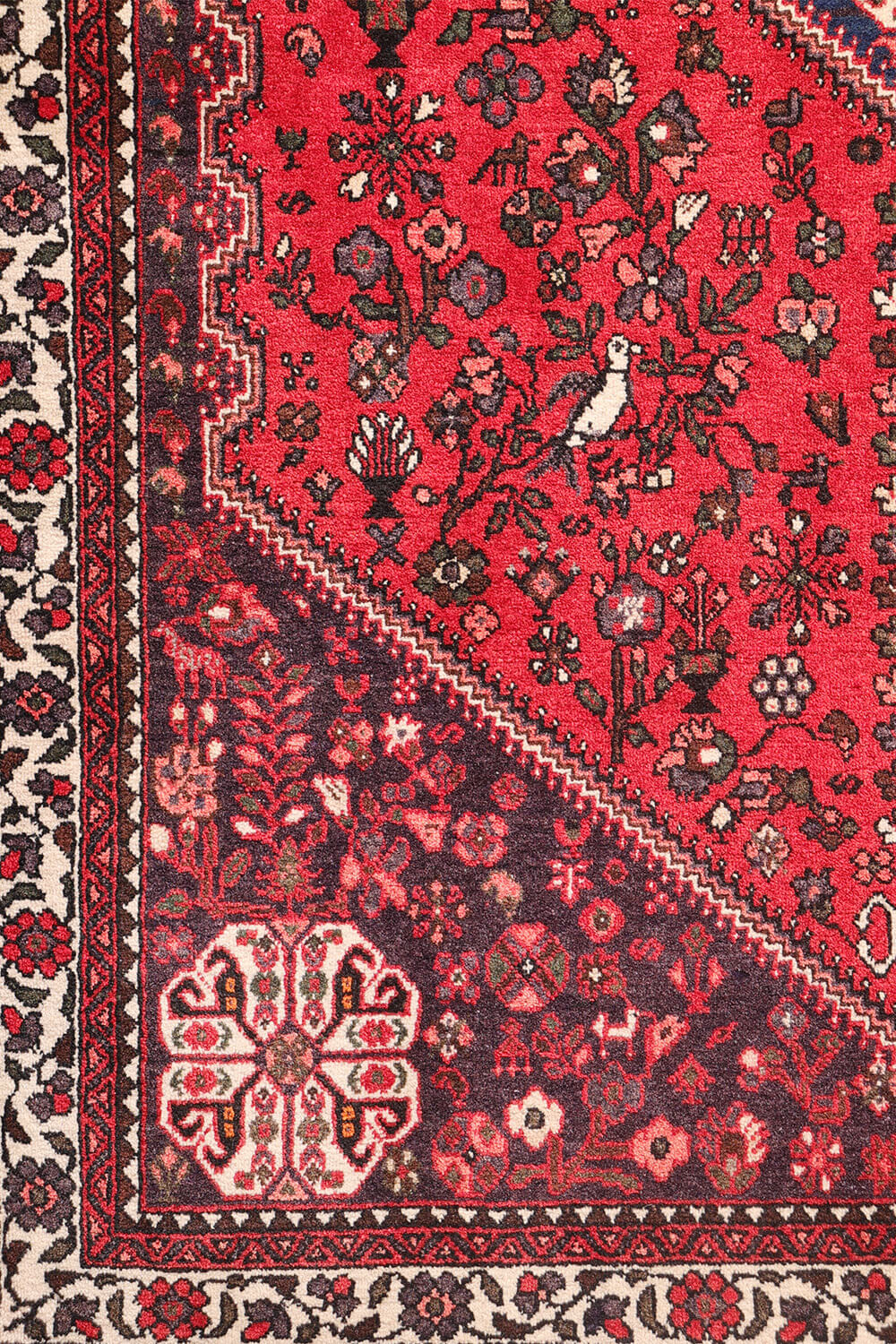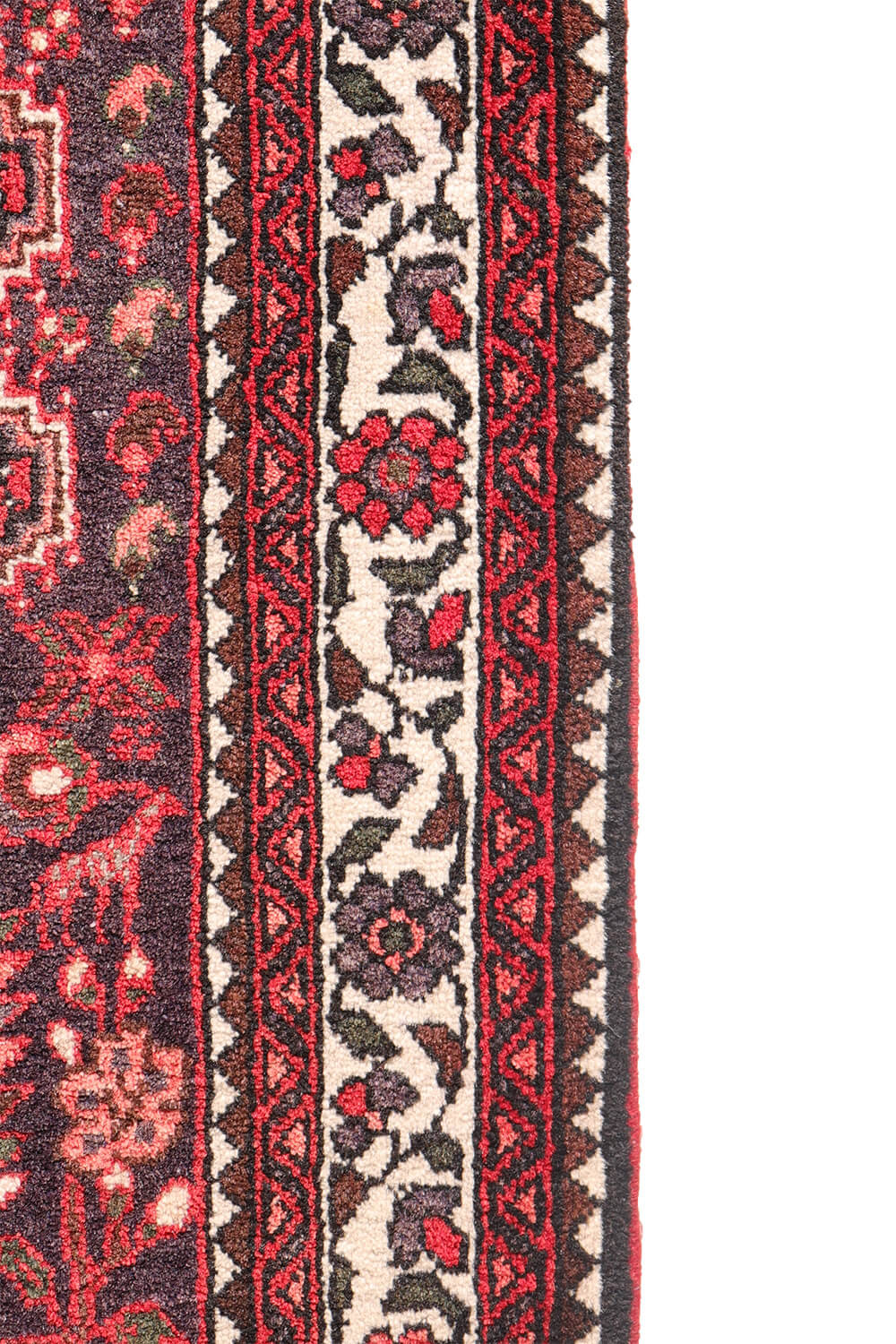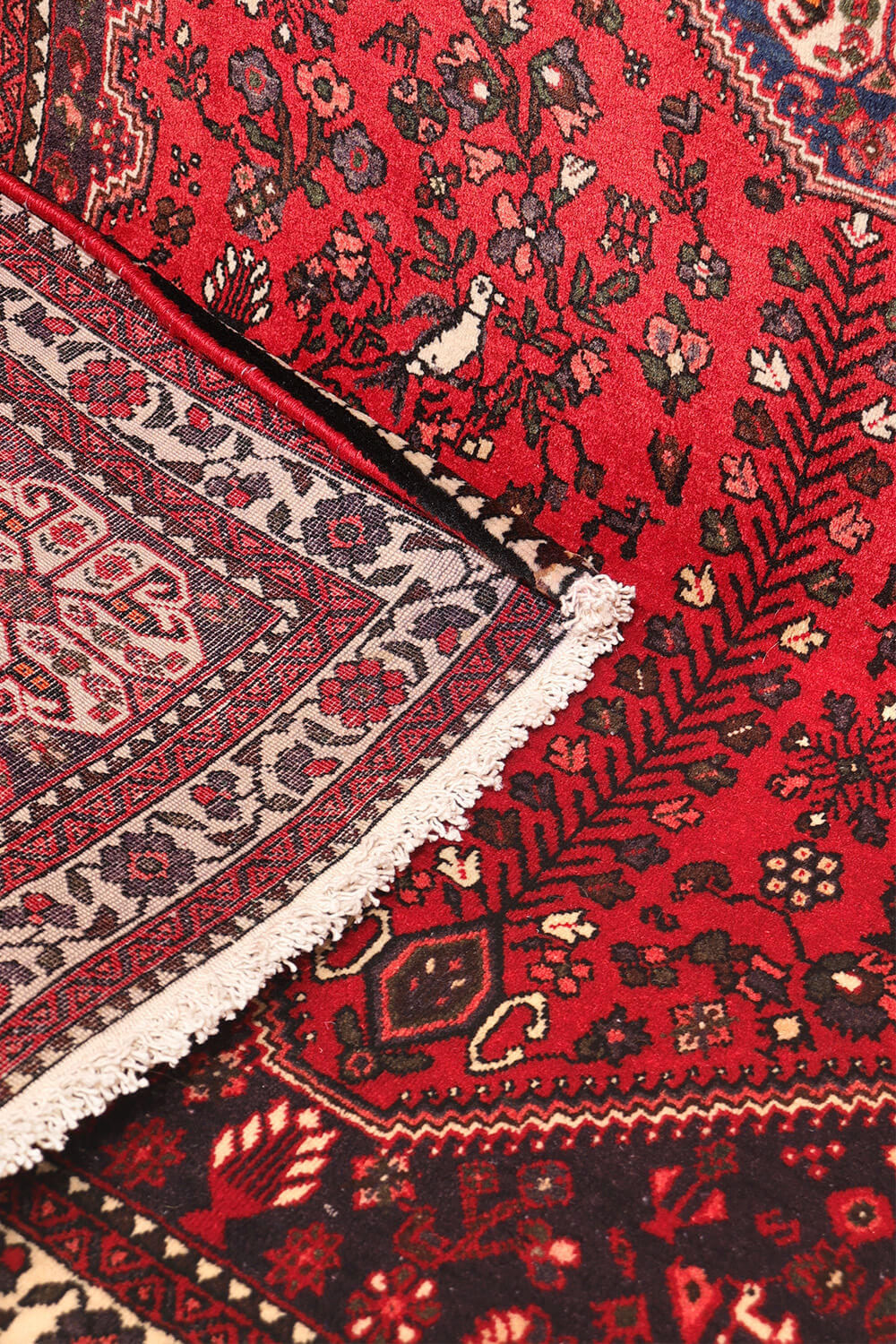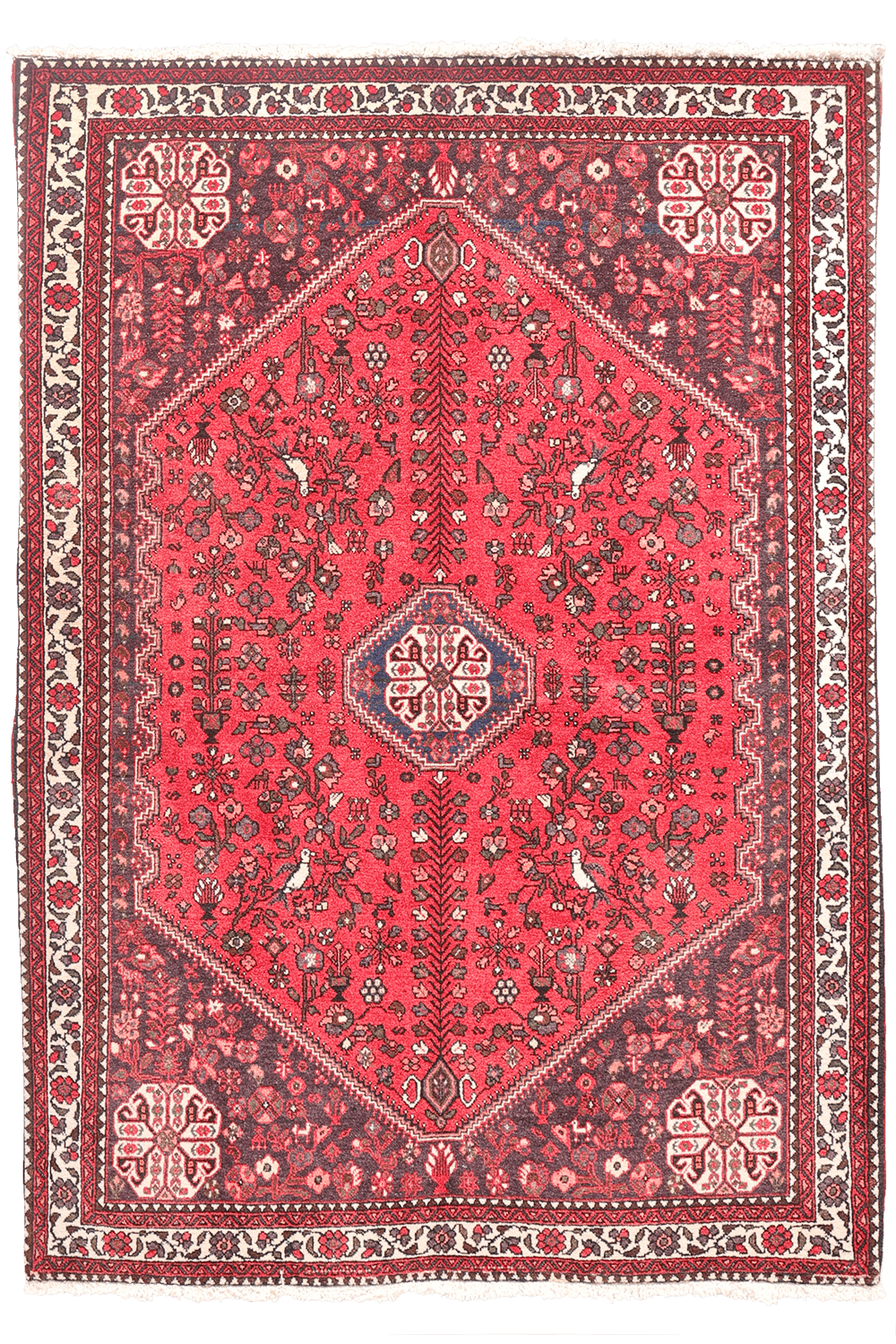Abadeh rugs originate from the town of Abadeh, located in the Fars province of southwestern Iran, between Isfahan and Shiraz. This position has long made Abadeh a meeting point between urban and tribal weaving traditions. The designs and techniques of these rugs show a clear influence from the Qashqai nomads who inhabit the region, resulting in pieces that combine the geometric spontaneity of tribal rugs with the technical precision of village production.
They are generally woven with a wool pile on a cotton foundation, which gives them strength, stability, and a relatively flat surface. The knotting is usually tight and dense, often ranging from 150,000 to 350,000 knots per square metre in finer examples. This structure makes Abadeh rugs durable and long-lasting, suitable for areas with regular foot traffic while maintaining a refined appearance.
One of the most distinctive features of Abadeh rugs is their design. They often feature a large central diamond- or lozenge-shaped medallion dividing the field into four corner sections. The surrounding field is densely filled with small, charming geometric motifs, such as stylised flowers, stars, birds, deer, and shrubs—motifs that reflect the tribal roots of their creators. Some examples also incorporate floral vase designs or the “Zill-i-Sultan” motif, which adds a touch of Persian urban elegance to their otherwise rustic character.
The colour palette of Abadeh rugs is rich and harmonious. Deep red or flame red is the most common background colour, balanced by shades of indigo blue, ivory, beige, and camel. Additional tones such as green, brown, cinnamon, or grey may appear in the motifs or borders. Traditionally, natural dyes were used, which over time develop a beautiful patina and a soft, warm appearance that enhances the rug’s depth and texture.
Abadeh rugs are most frequently produced in small to medium sizes, though larger examples also exist. Their sturdy weave and compact pile make them practical for everyday use without sacrificing their artistic appeal. They are often praised for combining the best of both worlds: the authenticity and charm of tribal weaving with the precision and durability of settled village craftsmanship.
Collectors and connoisseurs value Abadeh rugs for this balance of structure and spirit. The cotton foundation, the clarity of the central medallion, the evenness of the weave, and the brilliance of the dyes are indicators of quality. Although they may be less known or less expensive than urban Persian rugs from cities like Isfahan or Kashan, Abadeh rugs often offer exceptional value—beautiful, durable, and full of cultural depth.
